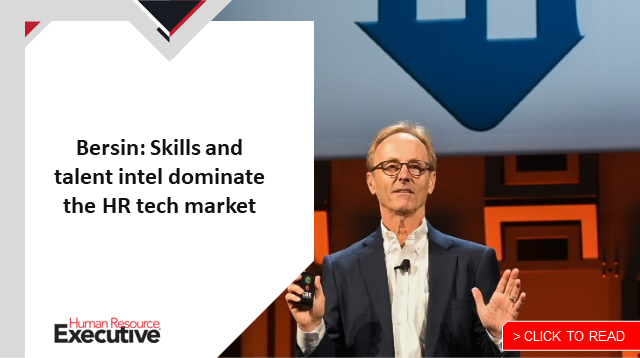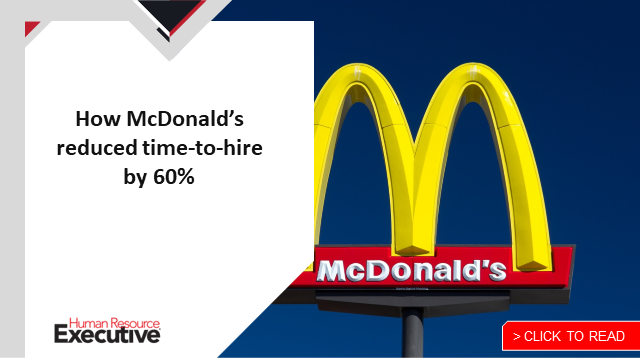With the HR Technology Conference behind us, I can take advantage of the little bit of a break we take in conference planning to check in with some of the important, innovative HR technology solution providers, as many of them hold events of their own in the fall. Recently, I attended Oracle’s CloudWorld event, the company’s annual user conference that, quite frankly, is massive in size and scope. With such a wide array of Oracle products and services—ranging from core IT cloud infrastructure solutions to hardware and software solutions to what is likely to be the most complete range of enterprise cloud applications—CloudWorld can be an overwhelming experience.
Fortunately, the team at CloudWorld made a point to dedicate a significant portion of session time to HCM technology and provided some timely and interesting updates on Oracle’s HCM progress, several customer case studies and their go-forward plans. As one of the largest, and most influential, HCM providers, it’s important for HR leaders, particularly at very large organizations, to keep updated on providers like Oracle, as they are one of the very few HCM technology solutions that can scale to hundreds of thousands of global users. Here are some quick observations on Oracle HCM gained from a few days at CloudWorld.
Recruiting solution progress and highlights
At CloudWorld, Oracle announced some important enhancements to the Cloud HCM suite, most notably several new capabilities added to the Oracle Recruiting Cloud application, grouped under the title of the Recruiting Booster. These capabilities include:
 Hiring event promotion and management: the capability to create and promote hiring events like job fairs or on-site college recruiting events on the company career site and set up candidate registration pages and screening questionnaires
Hiring event promotion and management: the capability to create and promote hiring events like job fairs or on-site college recruiting events on the company career site and set up candidate registration pages and screening questionnaires
Two-way messaging: provides the ability for recruiters to communicate with candidates using text and email directly through the Oracle Recruiting application and keep a log of these communications and interactions
Enhanced candidate experiences: improvements to Oracle’s AI-powered chatbot, the Oracle Digital Assistant, to allow candidates to discover and apply for jobs, complete screening and respond to surveys
Streamlined interview scheduling: enhances and automates the interview-booking process to set meetings faster and reduce the back-and-forth communication commonly required when scheduling. Plus, Oracle Recruiting Cloud now automatically identifies ideal times for interviews that align with the hiring team’s availability and shares these timeslots with candidates for their selection.
All these capabilities serve to expand the recruiting process areas that are covered by Oracle Recruiting Cloud, making the Oracle solution, notably, more comprehensive. And, according to comments from Oracle product leaders, it will enable customers to retire certain third-party solutions that are often acquired to round out previously unavailable capabilities in the Oracle platform.
Customer success stories
If there was one element that was emphasized more than others throughout the CloudWorld event, it would be the numerous examples of customer success with the Oracle Cloud HCM suite. During the event, I spent time with several customers that were made available to discuss their experiences with both the solutions themselves and the broader ideas around HR and digital transformation that often accompany large enterprise systems projects. Perhaps surprisingly, many of the customers described navigating through these HR transformation projects, and the implementation of new HR technologies, during and throughout the pandemic crisis, when disruptions of other kinds presented significant challenges to the organization.
The ability for customers to undertake enterprise and HR technology transformation projects in the middle of the global pandemic speaks to how modern HCM technologies—deployed in the cloud, configurable to meet customers’ needs without (typically) having to be customized, accessible on mobile devices and built with a consumer-grade, easy-to-use user experience—can be implemented successfully in less time, with lower costs and with greater employee adoption than ever before in HCM technology. One noteworthy example is London Heathrow Airport. Despite being a large, complex organization in one of the pandemic’s most heavily impacted industries, Heathrow was able to quickly restart its paused transformation project when it became apparent that, if its systems and processes were not modernized and ready, they would not be able to meet the expected surge in travel demand when the pandemic-related travel restrictions eased. The project teams were ultimately able to go live with Oracle Cloud HCM and Oracle Cloud ERP in 2021, making this project a remarkable achievement and a statement of how HCM technology can be leveraged as a strategic component of an organization’s digital transformation.
Takeaways for HR leaders
Customer conferences and events are designed to celebrate customer success and position the technology solution provider in a positive light. While Oracle CloudWorld did accomplish those objectives, the content shared and the conversations I had during the event revealed some important takeaways for HR leaders, particularly in larger enterprises. Specifically, Oracle HCM has come a remarkably long way in a relatively short period of time (including through the pandemic), developing what is likely the most comprehensive suite of HCM technology applications and capabilities delivered in a single, unified platform. When organizations consolidate HCM solutions and reduce the number of third-party solutions, they can lower the cost and complexity of the HCM technology footprint. In addition, this shift usually results in more data consistency, security, usability and overall ease of use (and increased adoption). Every additional HCM technology solution an organization adds to its platform increases cost, complexity and risk, so I have always advocated for HCM technology strategies that employ as few individual and disparate systems as possible. By continuing to build-out new capabilities onto Oracle Cloud HCM, Oracle is making it possible for organizations to greatly reduce the number of systems and providers needed by an organization to possess a fully capable, robust and modern HCM cloud solution.
 Finally, I will give a nod to the re-design and new look and feel of the Oracle Cloud HCM software demonstrated at CloudWorld. Longtime observers and users of legacy Oracle products would be pleased to see just how modern the new Oracle Applications look and how intuitive and usable they have become. In fact, not only has the Oracle Cloud HCM solution won awards for its functionality and capabilities (including a 2022 Top Product Award from Human Resource Executive), but the design system itself has also been recognized for achievement and innovation. My takeaway for HR leaders who perhaps had used or seen Oracle applications in the past, but have not been exposed to the new designs, is to spend some time getting re-acquainted with what Oracle HCM has been doing over the last several years. I am sure you will be pleasantly surprised by just how far the suite has progressed.
Finally, I will give a nod to the re-design and new look and feel of the Oracle Cloud HCM software demonstrated at CloudWorld. Longtime observers and users of legacy Oracle products would be pleased to see just how modern the new Oracle Applications look and how intuitive and usable they have become. In fact, not only has the Oracle Cloud HCM solution won awards for its functionality and capabilities (including a 2022 Top Product Award from Human Resource Executive), but the design system itself has also been recognized for achievement and innovation. My takeaway for HR leaders who perhaps had used or seen Oracle applications in the past, but have not been exposed to the new designs, is to spend some time getting re-acquainted with what Oracle HCM has been doing over the last several years. I am sure you will be pleasantly surprised by just how far the suite has progressed.
From the updates shared at CloudWorld, it is clear that the Oracle HCM team has continued to make significant progress in enhancing solution capabilities, expanding the application suite to increase functional area coverage, adding hundreds of new customers (with millions of employees), and charting an aggressive course for future improvements and innovation.
It was fun and enlightening to spend a few days taking a deep dive into Oracle HCM and passing along some observations to you. I look forward to sharing additional recommendations on other important HCM technology solution providers in the coming months.
The post HR tech and the elevated experience: What’s new from Oracle CloudWorld? appeared first on HR Executive.